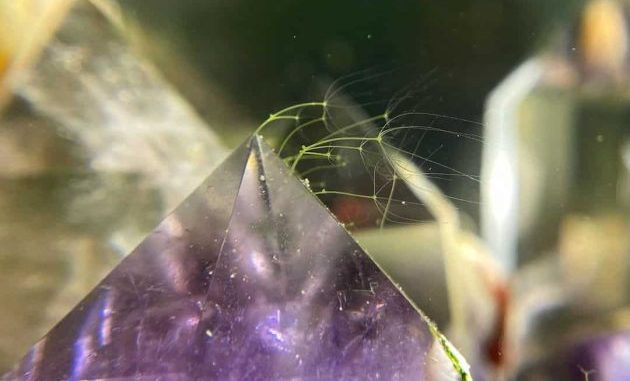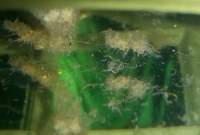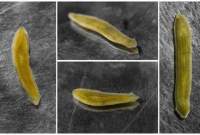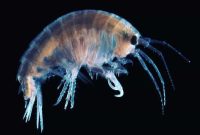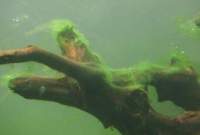Have you seen a weird small white creature with thin hairs on their head which look like a mini tentacle clinging to leaves or decorations inside your aquarium? They may be a hydra, a parasite that many fish tank owners have banned from their aquariums over time.
If you have problems with the hydra, you come to the right place. At this moment, we will discuss these unwanted pests from A-Z.
Dealing with them is relatively easy; even if you are had no experience, you can still be a winner. Keep reading this article to find out what they are, how to fight, prevent, and other fascinating information about them.
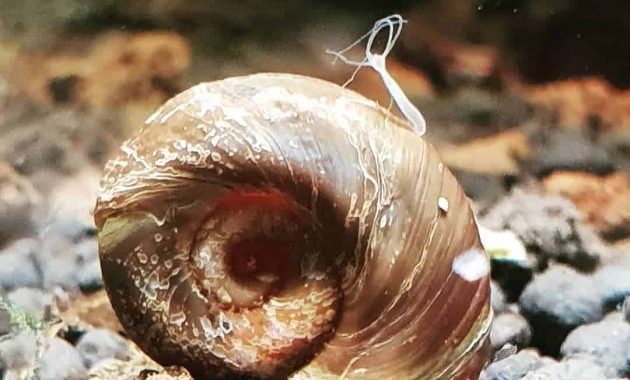
TABLE OF CONTENTS
What Is Hydra?
Hydra is a genus of tiny creatures that live in tropical water from the Cnidaria phylum and class hydrozoa. Sometimes, these organisms are called freshwater polyps. They are distant relatives of sea anemones, jellyfish, and corals, most of whom are marine inhabitants.
Antoni van Leeuwenhoek (1632–1723) is a person that first described the hydra in a letter that he sent to the Royal Society on Christmas day, 1702. Biologists have long gotten interested in these organisms because of their ‘immortal’ cells and ability to regenerate from the small parts.
Even if they divide mechanically into several pieces, hydra only needs about a week to restore their body into a functioning animal. Each fragment will regenerate and become a new individual; is it fascinating?
Hydra originates from temperate and tropical regions, and nowadays, they also can be found in fish tanks as nuisance pests.
Hydras Appearance
Their appearance is unique and easy to identify because they are different from other aquarium parasites. They have a tubular body with a sticky stalk or foot at one end that helps them attach their body to a surface (like decorations, plants, or wall glass).
While on the other end, there is a mouth encircled with 6-12 long and wispy tentacles. Same with their cousins, jellyfish, their tentacle parts have stinging cells to immobilize and catch their prey.
Hydra genus consists of hundreds of species; some are pretty unusual, with their tentacles seen in white color but invisible, translucent bodies.
Mostly, the hydra is white, but a few species come with a green and brown tint. Several specimens have long tentacles and long stalks; some are short on stalks and tentacles.
Some have tentacles on the tentacles and can generate a really odd organism. Some can reach more than half an inch in size, but other species only grow up less than 0.2 inches.
Another species can build chains of polyps that reach more than one inch long. This species bud at the top ‘head’ of the organism, and they form a series of the foot-on head hydra, which can be 2 – 4 hydra long.
Other interesting facts are hydra does not have a brain, no respiratory system, no circulatory, and even does not have any musculature. Nonetheless, they still cause severe damage to your pets, especially to every tiny population.
Types Of Freshwater Hydra That Commonly Seen In The Shrimp Or Fish Tank
Even though there are many hydra species that are distributed to all regions, it’s too difficult to identify specifically without microscopy. However, two species are exclusive, and they are the most usually appear in the tropical aquarium:
Green Hydras (Hydra/Cholorohydra Viridissma)
This type has a bright green color resulting from numerous algae on hydra’s endodermal cells. These algae come from the chlorella (zoochlorellae) genus and live as a symbiont with the hydra.
Actually, hydra viridissma is usually present in whitish color. Green algae perform photosynthesis and result in some sugars on their bodies; then it is used by the hydra; As a return, the hydra as a predator provides nitrogen sources for the algae which are getting from their diet.
Green hydra sizes are rarely more than 10 mm (0.4 inches) long; their arms or tentacles are commonly about half their body length.
In nature, the green hydra generally inhabits slow-moving or still fresh water bodies in the Northern temperature areas. They are pure carnivores, typically eating tiny insects, crustaceans, cyclops, fish larvae, and annelids. They release mucus for sticking on a surface using their basal disc.
Brown Hydras (Hydra Oligatics)
Hydra oligatics is different from other species; the brown hydra has longer tentacles reaching up to 5 cm (2 inches) or even more extended when relaxed.
Their column is pale transparent brown and has a length of about 15-25 mm (0.6 – 1 inch). The base part of their column is narrowed to form a foot or stalk.

Hydra Body Structured
All species under the hydra family have a two-cell layer that is radially symmetrical and a tubular body that is split by mesoglea (a thin non-cellular layer).
They have a mouth that at the same time acts as an anus; it is called a gastrovascular cavity. It means that hydra only have a single opening on their body, not just for consuming their food, but also as a way for waste products to go out.
This combined part is surrounded by tentacles; each of it contains nematocytes (stinging cells).
These organisms do not have organs but have tissues. It is composed of a tube around five millimeters in length, formed by ectoderm and endoderm.
It consists of 2 sections, the head part consisting of mouth-anus and tentacles at another end; there are foot and adherent disk.
Interspersed between the cells of the epithelial layers, there are some multipotent stem cells. It results in 4 differentiated cell types, including secretory cells, gametes, nematocytes, and nerves.
Hydra known can manage water amount inside their bodies. Because of this ability, they can contract or extend their bodies easily, anytime they want.
Another interesting fact is that they are responsive to light, although they do not have sensory organs.
How Hydra Reproduce
Same with planaria flatworms, another aquarium pest that we discussed before, hydra can reproduce their population in two ways, sexual and asexual.
When food stock is plentiful and the temperature is warm, range 66-72F / 18–22°C, they commonly reproduce asexually by budding. It seems like a budding growth on the parent’s body wall, then develop into a miniature of an adult hydra and separated into a new individual when they reach maturity.
Under good conditions and sufficient food, hydra can generate themselves every 2-3 days. It means they can create up to 15 new individuals in one month.
If the conditions lack food or are harsh, where reproduction is not possible in the asexual, sexual method occurs in hydra. In the wild, it usually often happens before the winter season comes.
An individual might produce female and male sex cells. A swelling that occurs in their body wall grows into the testes or ovaries. The individual with a testis will release gametes that swim freely into the water, then fertilize eggs in the ovary of another individual.
The inseminated eggs will surround a tough outer layer. When the parents die (because of the cold temperature or starvation), the resting eggs may fall to the base of a lake or pond in nature; to the substrate, or a surface in the planted aquarium environment.
Waiting for the more acceptable conditions, where they can hatch into larvae. Some species like hydra viridissma and hydra circumcincta may generate ovaries and testes simultaneously, usually called hermaphrodite.
Are Hydras Dangerous To Your Populations In The Shrimp Or Fish Tank?
According the statements mentioned above, they only feed on small creatures. That is means if your pets such as fish, shrimps, snails, or crabs are big enough, they probably safe. However, if their numbers are more than hundreds or even thousands, they would damage your population. For example, your fish may have a severe injury in their skins because of too much stinging from them; if you leave it untreated, it will lead to more problems.
Hydra can ingest an organism that has a size up to twice their size. The potential population to be prey in the aquarium environments are shrimplet and fish fry; their size is suitable for hydra. Primarily, shrimp babies under 1-month-old are at mortal risk.
They use neurotoxins to paralyze the victim; this poison is released from their tentacles or cnida (plural: cinade). Each tentacle is coated with cnidocytes or specialized stinging cells. The cnidocytes possess specialized structures known as nematocysts. It resembles a miniature light blub with a coiled thread inside.
Cnidocytes contain cnidocil or a short trigger hair that is positioned at the narrow outer edge of it. Upon hydra’s tentacles getting contact with victims, the nematocyst’s contents will discharge explosively.
Then, firring a thread like a dart containing neurotoxins into their preys or whatever triggered the release. This poison can immobilize their victims, particularly if nematocysts that shot in high amounts.
Hydra just needs less than 0.3 seconds to ‘stab’ their victims. Well, once some invertebrates such as shrimp or scud are closely coming to these polyps, they will jerk away rapidly. It also happens to fish; they will swim away suddenly. A similar hydra-like deadly parasite is also found in the saltwater tank called aiptasia.
In this case, aquatic plants are not too bothered by the existence of hydra due to their diet as predators. But, having many hydras inside your fish tank make it unsightly.
Are Hydra Harm For Fish Tank Owners?
The answer is obviously ‘NO’; their stinging cells are too weak for most humans. They will retract their tentacles quickly if you try touching them. Nonetheless, if the stub is more than a thousand or even millions, it can hurt people’s skins. In a case, rashes on the fishers’ hands are caused by the combined sting of large hydra populations on the fishing net, which leaves it submerged in the water for a long time.
Common Cause Hydra Appear In Your Shrimp Or Fish Tank
Like the ramshorn snails, they are introduced into your aquarium by hitchhiking some live plants, decorations, equipment, substrate, wood, and stones from an infected aquarium.
Hydra can also arise in your shrimp or fish tank from the live foods, hardscapes, plants, or soils you harvest from outdoor water sources.
It is crucial for the aquarium keepers to ensure the water from the fish bags you get from the stores does not enter into your setup because it is probably a way for hydra to sneak inside.
How Hydra Eats
They are not active hunters chasing their prey; instead, hydra are ambush predators that spend much time sitting and waiting for tiny organisms to come close, then launch an attack quickly.
During waiting for their prey, hydra could spread their body, reaching the maximum length and gradually lengthen the tentacles. It is incredible and can be extended to 4 or 5 times the length of their bodies.
When getting maximum extended, their tentacles will maneuver slowly, waiting for contact with suitable prey. Once contact occurs, the stinging cells on their tentacles fire the neurotoxins while coiling the prey.

Within thirty seconds, their most remains tentacles already join in order to conquer the struggling prey. After that, the tentacles will have encircled them and move them into the hydra’s mouth aperture. This process usually takes around two minutes.
approximately in ten minutes, prey commonly have been swallowed in the body cavity, and digestion will begin. After 2 or 3 days, the remains of their victims that can not be digested will release from the mouth through the contractions.
If the organisms are too large to consume, they will discard. In some cases, if the available food stock is not enough, hydra could absorb the organic molecules straightforwardly across the surfaces of their body to get some amount of diet.
If no food sources are left, they will stop reproducing and begin making their tissues for energy. Consequently, their body will shrink to a very small size, then die at the end.
How To Identify The Existence Of Hydra In Fish Or Shrimp Tank
There are two methods to recognize the hydra inside your aquarium, that is:
By Their Look
Honestly, it is hard to notice the existence of hydra at the beginning. Initially, they arise as tiny white spots resembling small freely—flying sand, turning into a small white stringy-like.
Long identifying with your naked eyes is not enough to discern what they are in this phase. You require a magnifying glass and sitting for a long time near your tank to get accurate information.
Upon they start sticking on the glass wall or some surfaces with black color, showing “unfamiliar” shapes, catching your attention. Sadly, in the most similar case, the hydra population in this phase should already spread in huge numbers due to their multiply faster habits.
Movement
These planted aquarium pests are typically sessile or sedentary, but they can sometimes move to find a better location to hunt. Hydra have two methods to move, somersaulting and looping.
In somersaulting, their body will bend over, creating a new attachment location with their foot part. While another method is by bending over and attaching their bodies to the surface with their head part (mouth and tentacles), then migrating the disk foot.
Hydra can move to reach up to 10 inches in a day by doing this two-movement method. At a glance, their movement resembles the tiny worms when move.
To reach a long-distance area, they can perform an amoeboid motion. Hydra will detach themselves grip on the substrate or surface, then let the water current take them to a new place in the fish tank.
How To Get Rid Of Hydra In The Shrimp And Fish Tank
Removing them manually using your hand is really unsuggested. Never try to break of them with your fingers or squash them with your nails.
It only makes the outbreak get worse. Keep in your mind that hydra can regenerate themselves, even from a small body piece. According to some research, they can continuously renew all their cell types. That means this ability can prevent them from the aging effects, simply immortal.
Instead, we have prepared some tricks against them without a cure. It slightly works for minor to medium plague; let’s read:
Manual Removal
You can use a net with tiny holes or siphon to take them out; it is quite a risk and works only for a small infestation. Make sure to do not damage them when you do so.
Cut Of The Food Portions
Overfeeding is a common mistake that many aquarium owners make. This lousy practice will create the problem more complex. If you feed your aquarium pets with live foods such as daphnia, brine shrimps, micro worms, or bloodworms, sure, some of them become prey for hydra.
Although you give dried conventional food like pellets, flakes, or algae wafers, the leftover food rises the tiny organism populations that hydra feed on. Using food dishes effectively controls food scattering while feeding time.
As much like other aquarium pests, the hydra is mobile if they have access to food sources. That means, if you reduce it, they will start to stave, then their population can be controlled. At least need a couple of weeks to see the effect, and it is the appropriate long-term solution.
Adding Hydra Killers Into Your Shrimp Or Fish Tank
Hydra themselves are a food source for certain animals in nature. In the aquarium habitat, some omnivorous fish such as sparkling gourami, paradise gourami, betta, mollies, guppies, and other fish that are willing to eat them can handle the hydra invasion.
Unfortunately, these fish leads to other issues; if you keep some shrimps, they may wipe out the colonies. Instead, you can add one of the three reported snail types that can eat hydra: Marisa cornuarietis snail, common pond snail, and asolene spixi snail. At least they are safer than fish which we have mentioned before.
But do not be assumed if these snails only hunt hydra specifically; they just feed on anything they can eat.
Unhappily, there is a possibility they also can consume your plants. Well, do some research first, and ensure the hydra eaters you want to add fit with your setup.
On the other hand, having freshwater snails is give beneficial; they can reduce the waste products in the aquarium by consuming it. That means the food sources for microscopics are fewer, which is interfering with their population growth. It clearly impacts the hydra, where they lost their prey.
Raise And Lower The Temperature
You require a heater in this method. An abrupt temperature change may shock your pets; move them into a separate tank. Next, boost the temperature to 41-43 degrees Celcius or 105-110 degrees Fahrenheit for a few hours.
This treatment should not influence most aquatic plants; remember, it can still be tolerated for most of them and the period is not too long. Regardless, if you keep a highly valued or sensitive plant, it would be better if you take it out and relocate it to different containers of water.
Besides that, you can drop the temperature by adding some ice blocks. But, they tend to go dormant rather than die. Upon the perfect condition is come, they will active back.
Using Light Trap
This method may not remove all hydras. Leastwise, it can decrease their populations significantly. You will need:
- Dim your aquarium lamp or switch off the light.
- Add a piece of glass, then stick it to the glass wall from the inside of the tank.
- Take a flashlight, point the light to these two layers of glass, and leave it in this condition for several hours.
- Hydras will move bit by bit, going to the light source and gathering there; at the end of the day, you can harvest them that sit on a piece of glass inside.
- Please take out the second attached glass carefully to prevent their fall into the water.
- Remove them from the glass altogether.
- Then wash the glass thoroughly.
- Repeat this process until you are satisfied.
Hydrogen Peroxide Treatment
This solution is familiar to most aquarists. It can solve many aquarium problems, such as eradicating most algae types, including spirogyra algae, fuzz algae, oedogonium algae, cladophora algae, staghorn algae, and red spot algae. this product is also known can kill bacteria that live in surface scums.
It turns out this liquid can suffocate the hydras too. As you know, utilization of this solution is hazardous and might harm your valued populations; you can move them before performing this treatment. This guide we get from a credible source, never overdoses:
- It is essential to know the water volume of your tank, measure it and consider the objects inside like substrate, decoration, equipment, and more.
- Next, switch off the filter system.
- Add 1.5 milliliter of 3% Hydrogen peroxide for 1 gallon or 4.5 liters of water, spreading it across the surface.
- Stir the water softly to spread it.
- Leave it for about 1 hour.
- Switch on the filter system.
- In the same week, perform a water change.
- After that, add bacterial supplements to restore the beneficial micro organisms eliminated during treatment.
For shrimp breeders, additional bacterial supplements are essential, it can help to regrow the biofilms due to their usefulness for shrimp growth.
Aquarium Salts Treatments
Hydra are sensitive to sea salt or iodine-free table salt. You can add 2g of salt for 10 liters of water; even according to the statement from a professional shrimp keeper site, 3-5 g of common salts per 1 liter of water for 3-5 days is still harmless for other aquarium inhabitants.
Other Medicine
Other cures that work in killing planaria are also potent in exterminating hydras. No-planaria, planaria zero, panacur c, and canine dewormer are products you can buy on Amazon or a local fish store. It is proven able to against them. The dosage is similar to those worms; you can find out in “How To Identify And Eliminate Planaria Flatworms Inside Aquarium.”
How To Prevent Hydra Appear Inside Shrimp And Fish Tank
They do not thrive spontaneously. Hydra is stowaways which often taken from external sources. Therefore you should do this:
- Always purchase the in vitro live plants from trusted sellers.
- Inspect new plants carefully before putting them into the fish tank; it is recommended to soak them in a mixture of alum. You need one tablespoon of alum and one-liter water, mix it and soak the plants in this solution for 10 minutes. Rinse them with fresh water.
- Quarantine every new animal from other sources before you add it to the aquarium.
- If you want to use soil, sand, driftwood, stones, etc., that you pick up from the wild, boil it in the kettle a few times. The alum mixture mentioned above can be used to soak the hardscapes or equipment from a separate tank too. Then, rinse it well using plain water.
- Live food is rich in nutrients, but if you collect it directly from ponds or streams, it is a high risk of hydra or other parasites. Frozen food, culturing your own live food, or buying packed live food like brine shrimps are more secure.
- Make sure to maintain your tank periodically to keep it healthy and stable.

